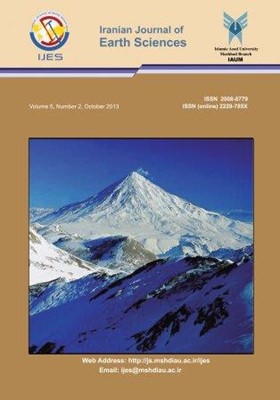-
-
List of Articles
-
Open Access Article
1 - Geochemical Investigation of Davarzan Surface Soils, West of Sabzevar, NE Iran
S.A. Mazhari A.R. Mazloumi Bajestani R. Sharifiyan Attar -
Open Access Article
2 - Geochemical Evaluation of Drinking Water in Arak City, Iran
Feridon Ghadimi Mohammad Ghomi -
Open Access Article
3 - Oligocene-Miocene Microfacies Study of Asmari Formation(NW - SE of Shiraz, Iran)
Mohammad Sadegh Dehghanian Borzu Asgari Pirbalouti Hamidreza Masoumi -
Open Access Article
4 - Microbiostratigraphy of Middle Eocene ShahbazanFormation at the southeastern flank of Chenar Anticline,Lurestan Basin, Sw Iran
I. Maghfouri Moghadam M. Taherpour Khalil Abad -
Open Access Article
5 - Nomenclature Review of the Rock Units in the StratigraphicLexicon of Yemen
Hamed A. El-Nakhal Abdulwahab S. Alaug -
Open Access Article
6 - Separation of Geochemical Anomalies Using Factor Analysis and Concentration-Number (C-N) Fractal Modeling Based on Stream Sediments Data in Esfordi 1:100000 Sheet, Central Iran
Peyman Afzal Afshar Zia Zarifi Behnam Sadeghi -
Open Access Article
7 - Assessment of Heavy Metal Contamination in Soils around of Khash Cement Plant, SE Iran
Mohammad Elyas Moslempour Sara Shahdadi
-
The rights to this website are owned by the Raimag Press Management System.
Copyright © 2021-2025







